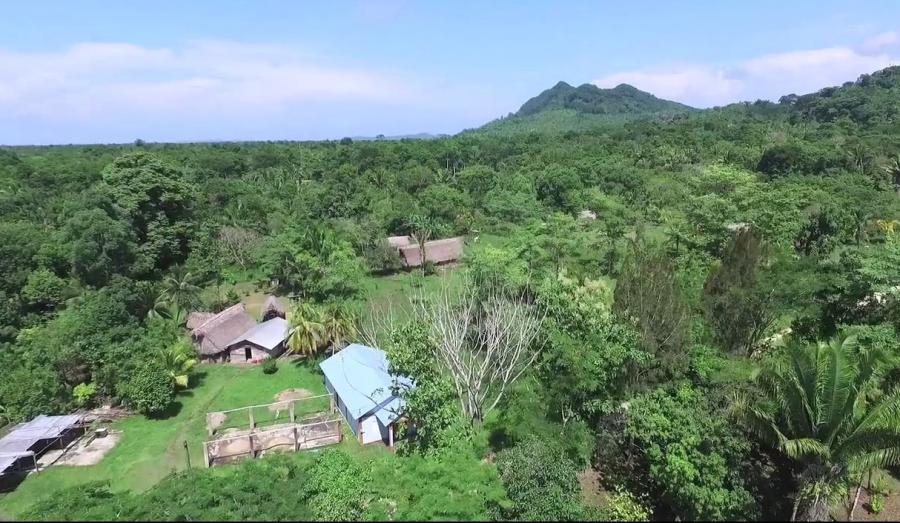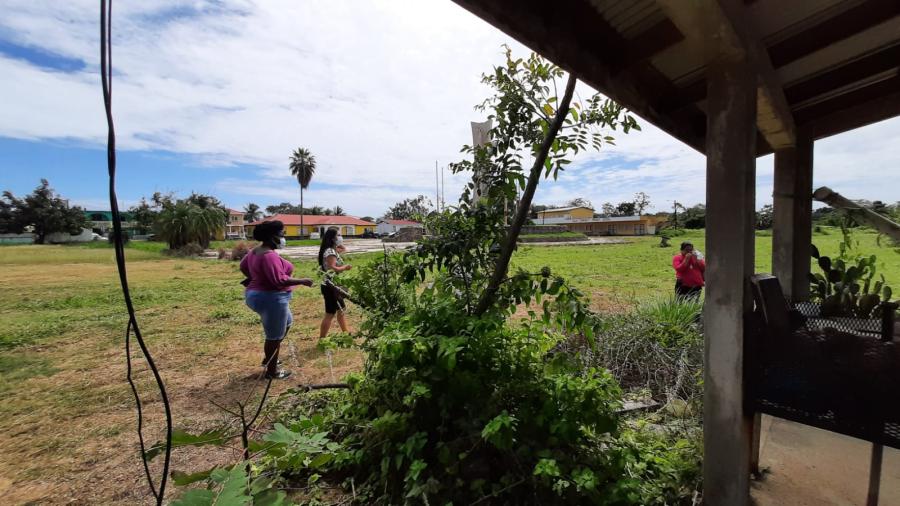Pablo Lambey, president of the National Garifuna Council of Belize, has a long history of activism in trade unions, human rights, and promoting grassroots welfare. A fisherman and owner of a small grocery store, he lives in Dangriga, the largest Garifuna community in Belize.
Native to the Caribbean islands, the Garifuna are a mixture of Arawak Caribs and African slaves who arrived in Central America in 1797 after being shipped from the island of St. Vincent by the British. About 18,000 Garifuna live in Belize.
University of the West Indies anthropologist Joseph Palacio, a Garifuna himself, and his daughter Arreini, a high-school student in Belize, conducted the interview.
The 500th anniversary of Columbus's arrival has awakened unwanted memories, basically historical memories. But we know it is of no use dwelling on the past. It is our intention to use this time of awakening memories to look forward into the development of our culture and our people in general. Through this opportunity, we need to try to get back to the issues of our forefathers, to go back to farming and back to fishing. But we need to do these things in a more modern and economical fashion.
Mainly, we need to try to make our culture be a tool for development. By this we mean that while we reflect on the past we should address the future by trying to uplift the country to cope with the changing times in Belize. For instance, we need to elevate ourselves today in line to get into the tourism business so we can uplift ourselves financially and otherwise. Ecotourism could help us educate others and teach us human and public relations. But the number of Garinagu in ecotourism is very minimal. ["Garinagu" is "people" in Garifuna and is how people refer to themselves.]
The National Garifuna Council has specific plans for ecotourism. We have acquired land by the seashore in the town of Dangriga to develop as an historical tourism site. We also plan to hold training workshops for villagers on combining the wise use of the environment with tourism. The government of Belize is pushing ecotourism right now so the National Garifuna Council might be able to tap into the Belize government and non-governmental organizations for funding for the training.
We may have difficulty getting the land we need for ecotourism. There is a lot of competition with both Belizean investors and foreigners, mostly from the United States. We are also worried about preserving the seacoast. We want to make sure it isn't polluted and that the beaches aren't eroded. All our villages are located on the seacoast, and we want to preserve our maritime resources.
We would want to become a self-sufficient people again. To do that, we need to get back to our language, our customs - try to be ourselves once more. First of all we are looking here at education; we need to educate ourselves.
Now when we are talking about education, we are not merely talking about clerical education, because education is a very wide field. And our plans are to develop our people not only through education, but also in agriculture. Agricultural training is a government initiative, and the National Garifuna Council is lobbying for more training for our people.
We are also trying to revive past traditions, such as handicrafts, religious rituals, cooking, and medicine. That way the younger generation may learn about and use our traditions, such as handicrafts, as a tool for development. We need to educate our people as to who they are, where they come from, where they are, that we can be steadfast against opposition.
We need to show the people that these are the things that they eat and these are the things that they produce. We need to be self-sufficient in producing and selling foodstuffs. Education should generate pride in self and greater awareness of one's culture.
And we need to get back to unity. We need to unify ourselves so we can act in numbers. There are prominent Garifuna communities in this country and so long as we can act in numbers, we can try to make every community be active within the Garifuna situation. Some communities are more advanced materially, with electricity and running water, just as some know more about our culture. People from those communities, like Dangriga, need to work with others who are not as advanced.
During the next year, the National Garifuna Council plans to build a cultural museum in Dangriga. We also need to expand the staff of the council, improve networking among the various branches, start a newsletter, and push for membership within the council.
WE ARE ONE
My personal feeling is that we also need to talk about integration, intermarriage, etc., among the Garifuna, Maya, Mestizo, and others. We need to share more and network more to help solve each other's problems. Disadvantaged groups should help each other. There has got to be a strong bond among all of us small people. Ethnically, we cannot go alone. We need the support of each other because we are only a small group of poor people, underprivileged people traveling against those that control us. To be able to do the things we want to do, to be able to have the voice we would like to have, there has got to be that cooperation among the small groups of people - the National Garifuna Council, the Maya Cultural Council, the Afro-Belize movement, and you name it. The Caribbean Organization of Indigenous Peoples is trying to promote the awareness that all poor people must learn that we each need one another.
Beyond that, I can proudly say that the National Garifuna Council has advocated strongly for many years now for a regional Caribbean type of movement. I think it is a healthy thing, long standing, long wanted. If we look at ourselves in Belize as Garinagu people and we look at our brothers and sisters in the Caribbean, we are one. If you look in Central and South America, though we differ in size, we are still one. Today, as you can see, we cannot visit each other before going to that country of the United States. The only way to enter or exit Belize is through the Miami airport. Now the governments of the English-speaking Caribbean states are pushing for further integration and cooperation among themselves. If that happens, we will be allowed to visit each other freely, we will be allowed to know each other's business, we will be allowed to advise each other as to what to do. We will be able to decide the place of our market, etc., etc.
The main problem is that we cannot rush the process. It takes time. The major obstacle is ourselves. Either the elders are not passing on the culture or the youths are not accepting it. Also, there are certain conflicts that are hindering our cultural progress. Division among members is the most prominent problem at the moment. The lucky degrade the unfortunate, the educated separate themselves from the uneducated.
Another problem is the lack of trust that exists among our peers and fellow Garinagu. This ties in with the acceptance of our culture by the future adults. They find it difficult because of discrimination from their peers. When young people try to project themselves as Garifuna, they are discouraged from doing so by other Garifuna youth, who lack respect for themselves as Garifuna. We should identify each one as an individual and respect personal views.
Basically, the message of unity is being spread among the Garinagu by the National Garifuna Council. And I feel very confident that the black people of this country will also integrate with the Indian people of the region. Before my death we will be one people in this region.
Projects for the Future
Country: Guatemala
Organization: Committee of Bio-Itz
Once the majority ethnic group in the Petén, only 50 Itz Maya families remain, living in San José. Their language encodes an extraordinary amount of information about the forest ecosystem of the Petén, but the Itz are concerned that this knowledge will disappear within a generation.
Assisted by two scientists, the Itz are working to preserve and strengthen Itz culture, using their botanical system as s focus. In addition, the University of Michigan has helped the Itz gain access to about 10 square miles of primary rainforest in the new Maya Biosphere Reserve. The Itz have exploited this area only slightly, gathering resources and farming corn. They hope to maintain it in its natural state as a buffer zone for the Biosphere Reserve.
The committee also helps provide park guards during the dry season to protect the land, and it collects and nurtures seedlings from valuable tree species to transplant to Bio-Itz lands and common fields farmed by the Itz . In addition, the committee is helping plan and coordinate future economic projects.
Address: Municipio de San José, Departmento del Petén, Guatemala
Article copyright Cultural Survival, Inc.



